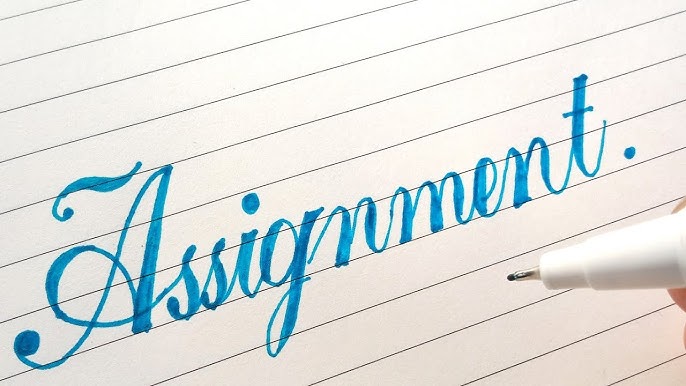Steps to Proofread Assignments

Proofreading is a critical step in ensuring your assignments are polished and professional. Often overlooked, this final review can help you catch errors, improve clarity, and make a strong impression on your readers or professors. Here’s a simple, step-by-step guide to help you proofread your assignments effectively.
1. Take a Break Before Proofreading
After completing your assignment, resist the urge to proofread it immediately. Your brain is likely fatigued, making it harder to notice errors. Take a short break—step away for an hour or even a day if possible. This pause helps you approach your work with fresh eyes and a clearer perspective.
2. Read the Assignment Out Loud
One of the simplest and most effective ways to catch mistakes is to read your assignment out loud. This forces you to slow down and focus on each word. As you read, listen for sentences that sound awkward or unclear. If something doesn’t sound right when spoken, it likely needs revision.
3. Check for Spelling and Typographical Errors
Typos and spelling mistakes can distract readers and undermine your credibility. While spellcheck tools in software like Microsoft Word or Google Docs can be helpful, don’t rely on them entirely. They might miss context-specific errors like “their” vs. “there” or “its” vs. “it’s.” Manually scanning your document is essential.
4. Review Grammar and Punctuation
Grammar errors can significantly affect the quality of your writing. Look out for common issues like:
- Subject-verb agreement (e.g., “He go” should be “He goes”).
- Misplaced commas or missing periods.
- Sentence fragments or run-on sentences.
If you’re unsure about a rule, use grammar-check tools like Grammarly or consult a trusted grammar guide.
5. Examine Sentence Structure and Clarity
Your sentences should be clear and easy to understand. Ask yourself:
- Does each sentence convey its intended meaning?
- Are there any sentences that feel too long or complicated?
- Have you avoided unnecessary repetition?
Simplify overly complex sentences and remove any redundant words or phrases.
6. Verify Formatting and Structure
Ensure that your assignment follows the required format and structure. Check for:
- Proper headings and subheadings.
- Correct font style and size.
- Consistent line spacing and margins.
If you’re following a specific style guide (e.g., APA, MLA, Chicago), make sure your assignment adheres to its rules for citations, references, and overall presentation.
7. Pay Attention to Assignment Guidelines
Reread the instructions or rubric provided by your teacher or professor. Ensure that your assignment meets all the requirements, such as word count, content relevance, and formatting specifications. Failing to follow guidelines can lead to unnecessary point deductions.
8. Focus on One Type of Error at a Time
To avoid feeling overwhelmed, tackle one type of error at a time. For example:
- First, scan for spelling errors.
- Then, check grammar and punctuation.
- Lastly, review sentence structure and clarity.
This methodical approach ensures a thorough review.
9. Seek Feedback from a Friend or Peer
Sometimes, a fresh set of eyes can catch mistakes you might miss. Ask a friend, classmate, or family member to review your assignment. They might spot errors or suggest improvements to enhance your writing.
10. Use Proofreading Tools
Leverage online tools to assist in your proofreading process. Some popular options include:
- Grammarly: Detects grammar, spelling, and punctuation errors.
- Hemingway App: Highlights overly complex sentences and suggests simpler alternatives.
- ProWritingAid: Offers detailed feedback on grammar, style, and readability.
These tools can complement your manual proofreading efforts but should not replace them.
11. Check Your References and Citations
If your assignment includes references, ensure they are correctly cited according to the required style guide. Double-check that all sources listed in your bibliography are also mentioned in your text and vice versa. Missteps in citation formatting can lead to accusations of plagiarism.
12. Test for Consistency
Consistency in tone, style, and formatting is essential. Ensure that:
- Your tense remains consistent (e.g., past vs. present tense).
- You use the same font and size throughout.
- Your paragraphs are evenly spaced and aligned.
Small inconsistencies can distract the reader and make your assignment appear unprofessional.
13. Review the Introduction and Conclusion
Your introduction and conclusion are the most critical parts of your assignment. The introduction should clearly outline the purpose of your work, while the conclusion should summarize your main points and leave a lasting impression. Ensure both sections are concise, engaging, and free of errors.
14. Proofread Multiple Times
One round of proofreading is rarely enough. Go through your assignment at least two or three times, focusing on different aspects each time. This increases the chances of catching all errors and improving overall quality.
15. Print Your Assignment for a Final Review
Reviewing a printed copy of your assignment can help you spot errors you might miss on a screen. Highlight mistakes with a pen and make corrections before submitting the final version.
Final Thoughts
Proofreading is a simple yet powerful way to elevate the quality of your assignments. By following these steps, you can catch errors, improve readability, and ensure your work meets academic standards.
For students seeking Business Assignment Help or Assignment Help Online UK, Assignment Champion is here to guide you through every step of your academic journey, ensuring success and excellence in your work.
Happy proofreading!







